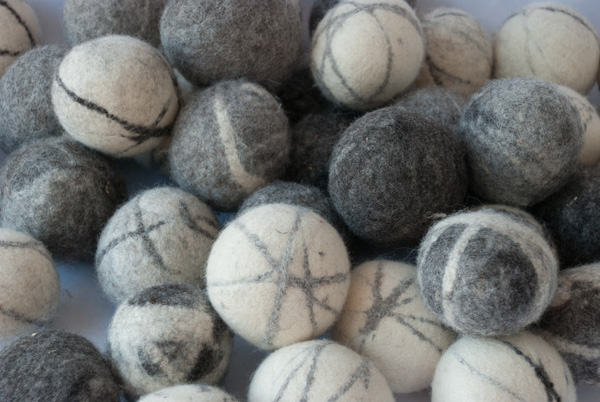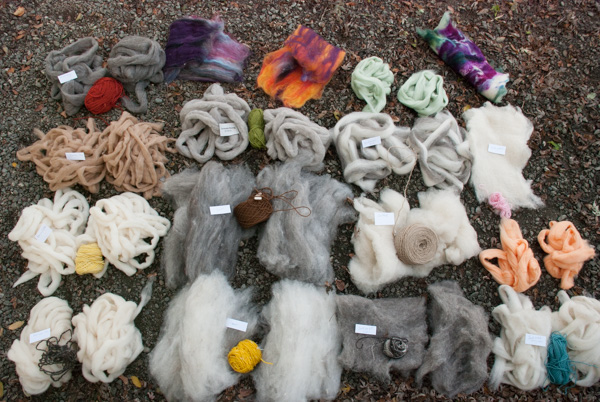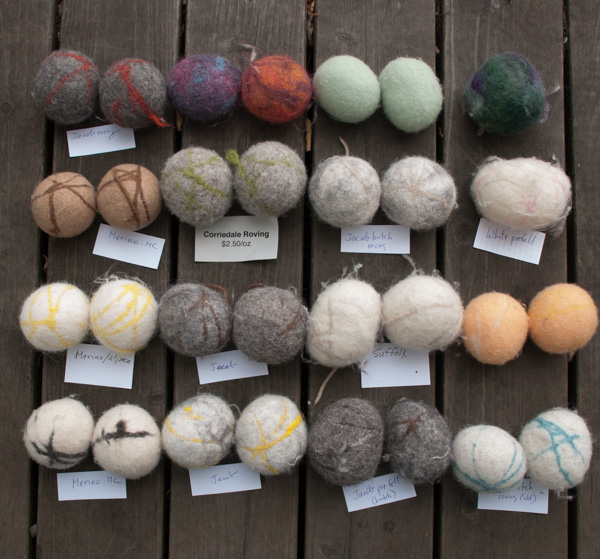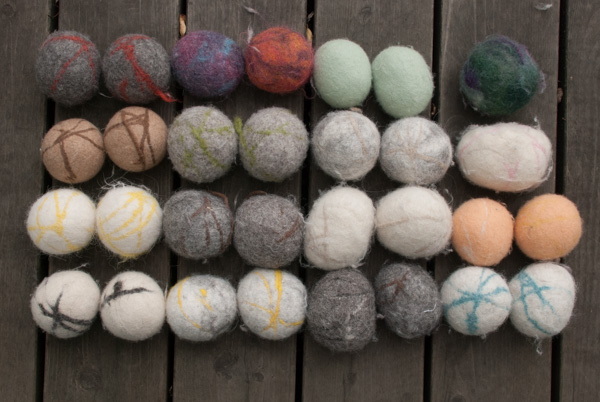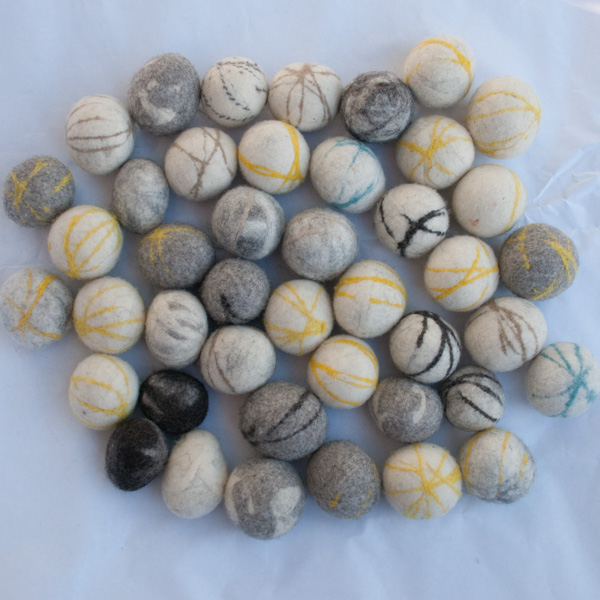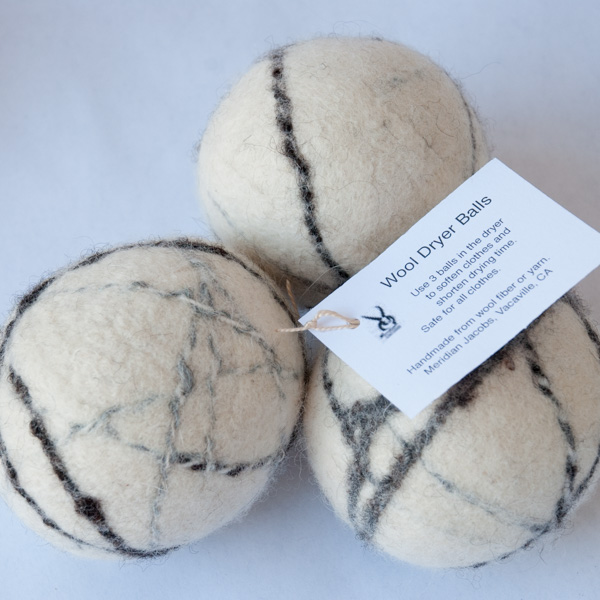Shearing at the Timm Ranch
/Yesterday was Shearing Day at the Timm Ranch, in the hills west of my place. We lucked out with weather because it rained last week and it's raining now, but the rain stopped long enough for the sheep to dry out and to stay dry through shearing. I have been using this wool for a few years now and I love it. I posted about last year's yarn in this post and shearing in 2015 and about some of the weaving I did using the wool in 2014. My goal was to skirt and sort wool and to finish with 200 pounds because that is the amount that I need to send for processing. After last month's experience at the Anderson Ranch shearing (which I thought I wrote a blog post about but I guess I missed) I realized that is easier said than done and I was concerned that I wouldn't get enough sorted before shearing day was over and the crew packed up and left for the next job. An ulterior motive of skirting at the ranch is that: #1 The job is done and I don't have all that work to do at home another day, and, #2 The crew will bale it for me which will much simplify shipping. Fortunately a few friends came along and helped out.
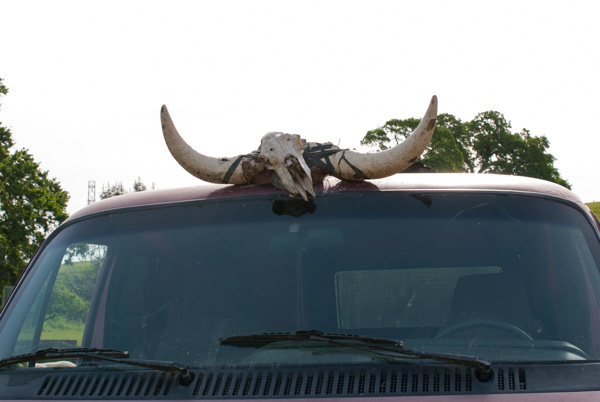
We planned to arrive just after the crew had started shearing, but instead we followed their van into the ranch and it took awhile before shearing began. That left some time for photos. I was amused by the adornment to the top of the van. Take another look and you'll realize that those are two different species represented there. Shearing crew with a sense of humor.
Sheep portraits:
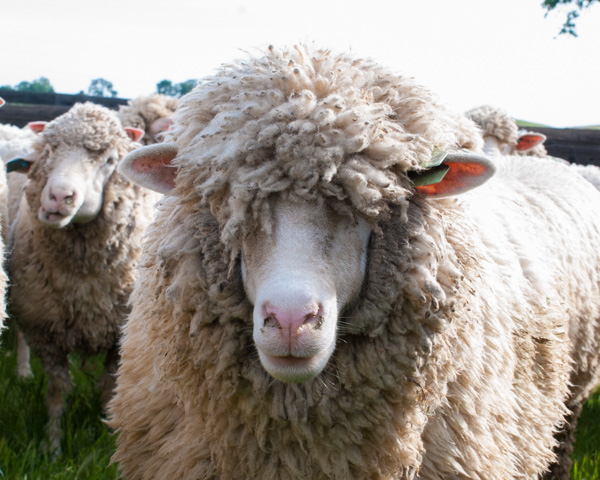
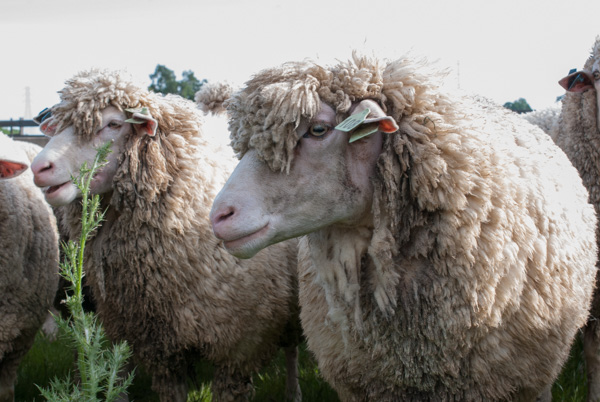
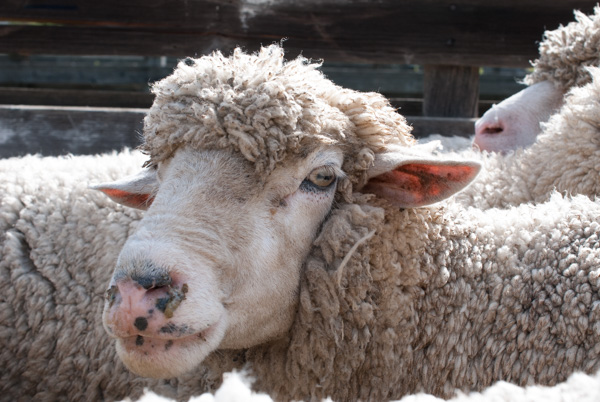
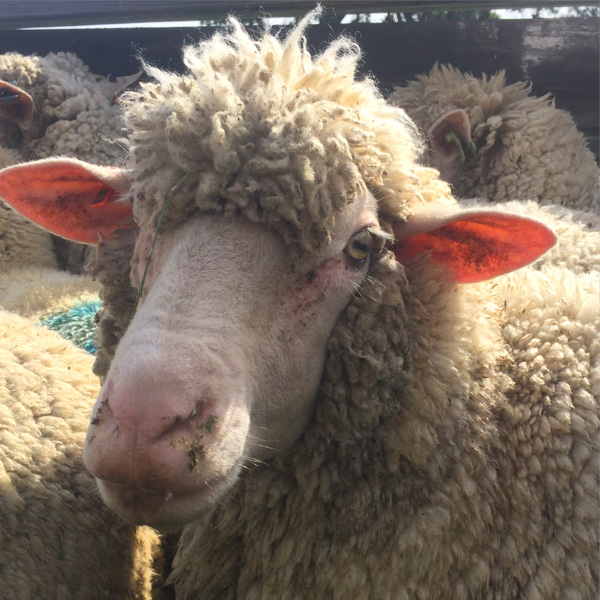
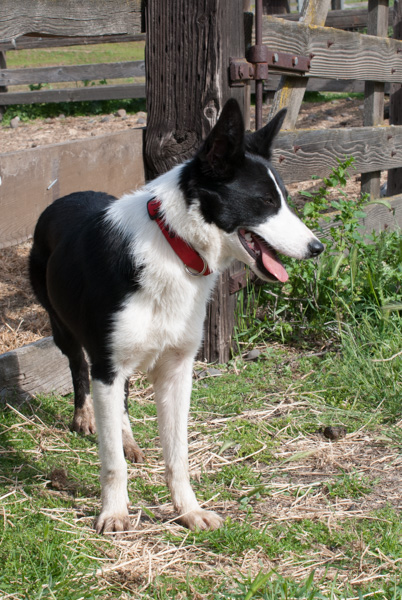
Tis is Bonnie, the 9-month old Border Collie who found delight in rolling in the piles of wool and draggin away what she could.
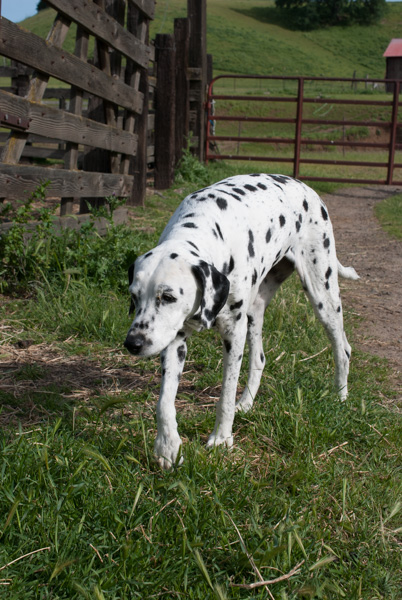
I didn't get this one's name. There are three Border Collies, this Dalmatian and a guardian dog on the ranch.
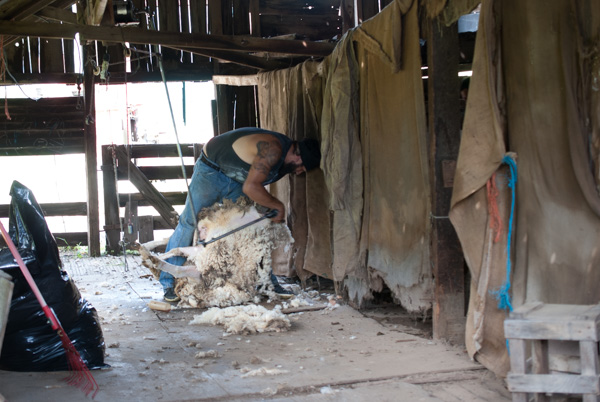
In previous years there were two shearers but only one this time. That made it easier for us to keep up with evaluating fleeces and skirting.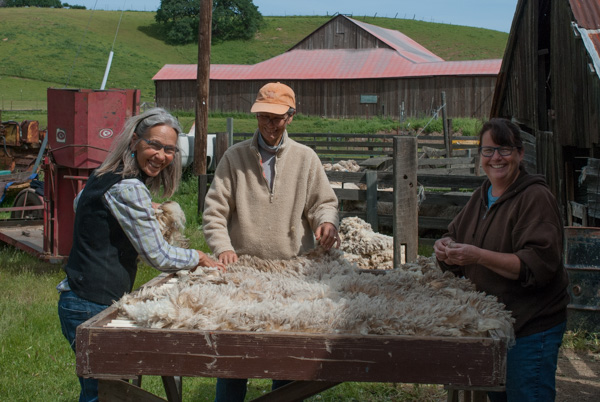
My crew: Vicki, and two Farm Club members, Kathleen and Mary.
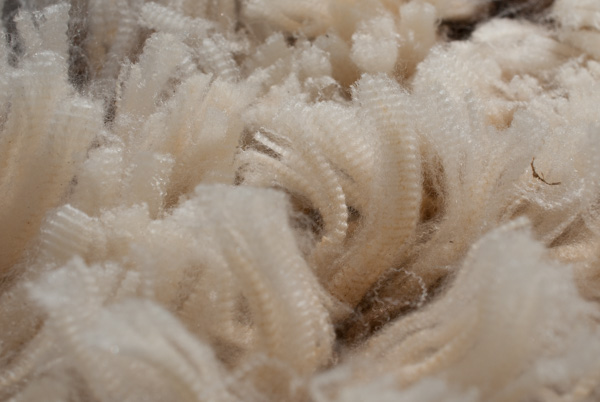
This is some of the lovely wool we saw. Last year's wool tested at 21.8 microns and I expect about the same of this. We were strict on the criteria for the wool we kept--no vegetable matter, no weak spots or breaks and good length. Every year a ranch's wool clip can be impacted by weather. After several years of drought I think I saw the effects of a bit too much rain in some fleeces--the wool on the back seemed more fragile and shorter in some fleeces. But timing was right for shearing this year in terms of vegetable matter. We found a small amount of filaree seeds with their corkscrew-like ends but no foxtails or other stickers. 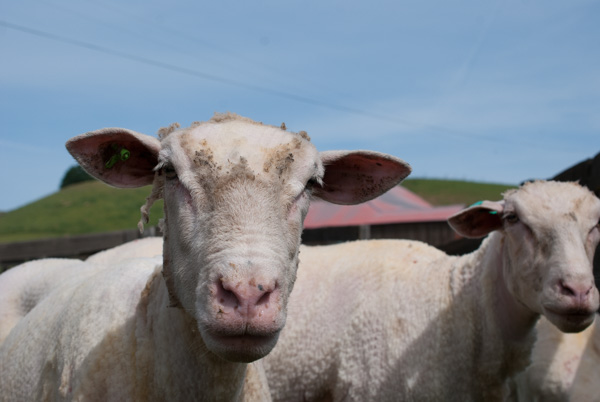
Sheep after shearing.
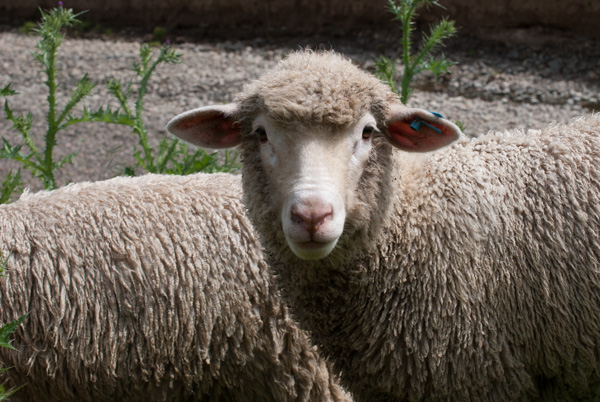
Lambs were outside the shearing pen waiting for their moms.
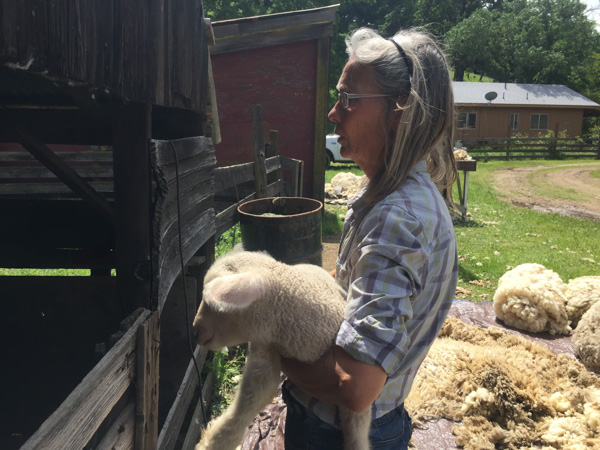
Vicki caught a pair of twins that escaped and were looking for a way back to mom.
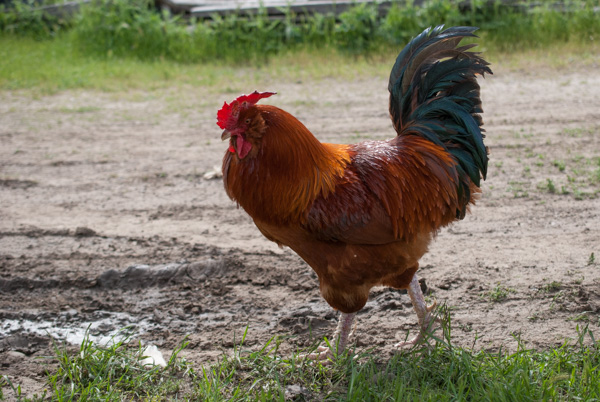
Beautiful rooster that walked by.
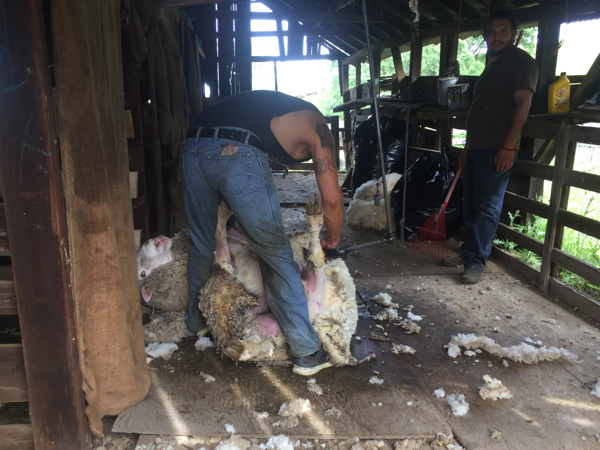
It was late in the day and we had skirted 197 pounds. We had fleeces piled up to look at, but then it was time to shear the rams.
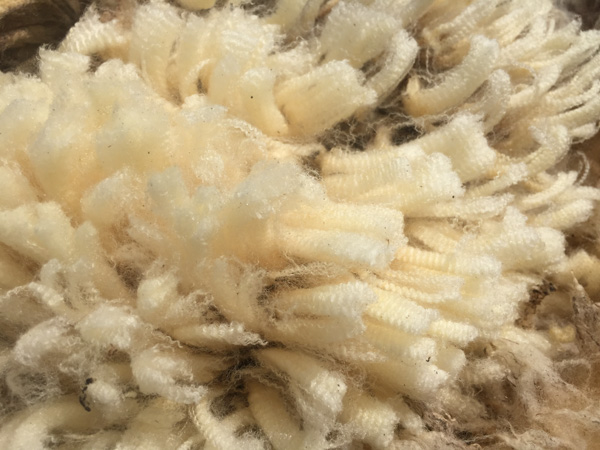
Those ram fleeces were gorgeous and put me over the top.
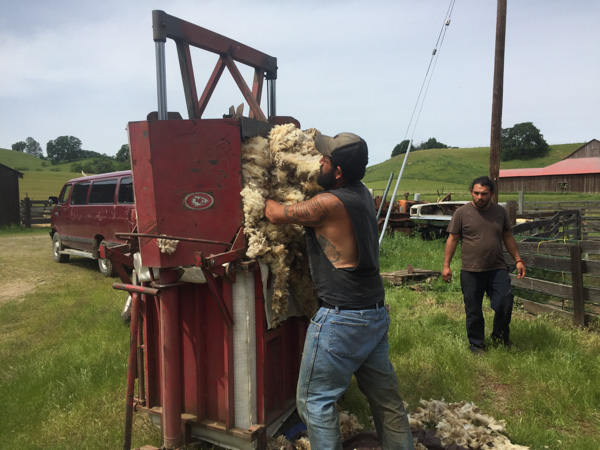
The crew was baling the wool and we kept sorting.
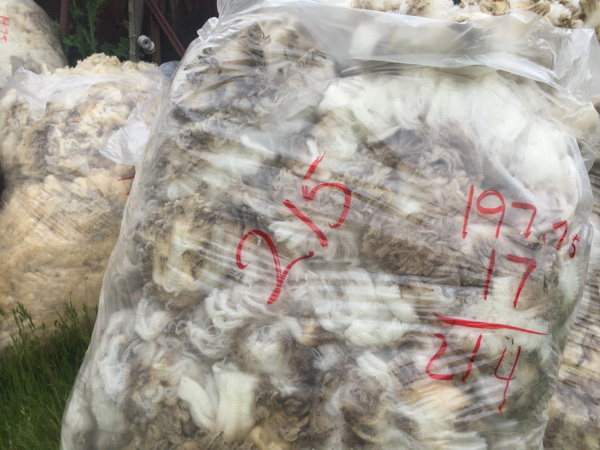
We stopped at 215 pounds...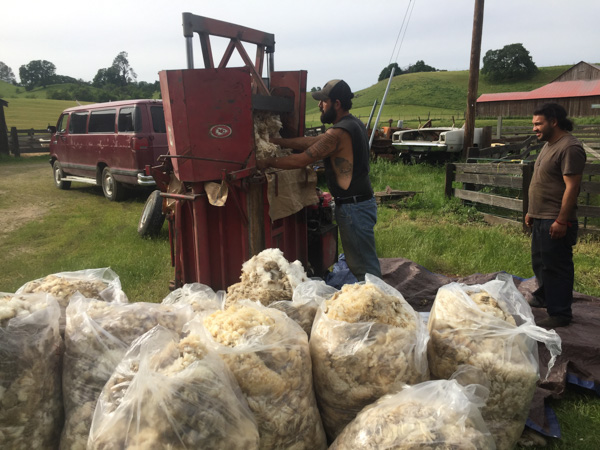
...and just in time for my wool to be baled. My bale is only 215 pounds instead of 400 which is what they usually bale, but having a bale will make shipping it much easier than if I had to cram all that wool into boxes. Now I just need to finish skirting and sorting all the Jacob wool so I can ship it all at once. What am I doing sitting here on the computer?

